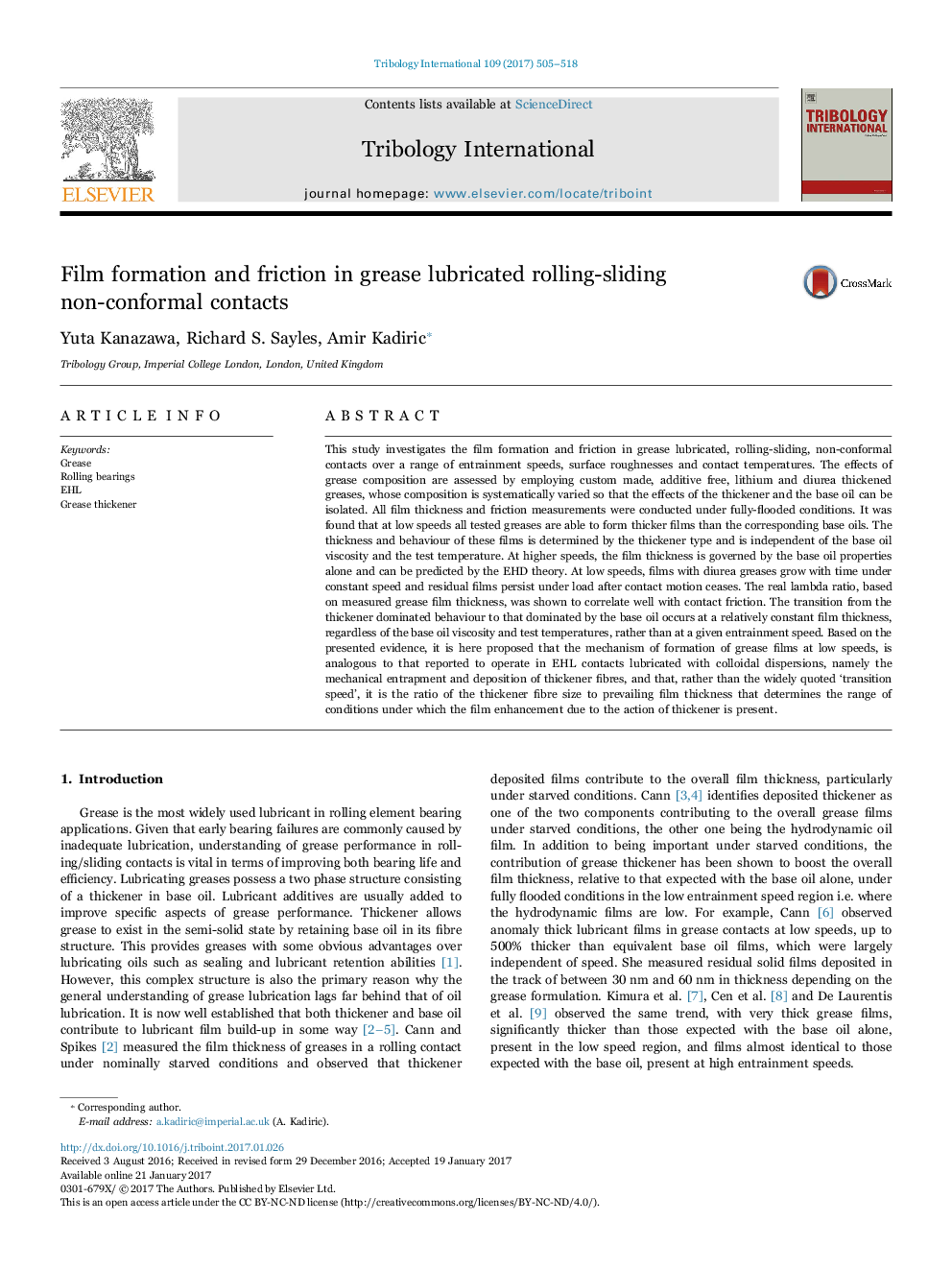| Article ID | Journal | Published Year | Pages | File Type |
|---|---|---|---|---|
| 4986189 | Tribology International | 2017 | 14 Pages |
â¢Model greases with systematically varied composition are studied.â¢Wide range of lambda ratios covered by varying roughness and temperature.â¢Low-speed grease behaviour governed by thickener, high-speed behaviour by oil.â¢Mechanisms of grease film formation proposed, similar to those reported in colloidal dispersions of nanoparticles.â¢The ratio of thickener fibre size to film thickness determines the point of transition between the thickener-dominated and oil-dominated operating regions.
This study investigates the film formation and friction in grease lubricated, rolling-sliding, non-conformal contacts over a range of entrainment speeds, surface roughnesses and contact temperatures. The effects of grease composition are assessed by employing custom made, additive free, lithium and diurea thickened greases, whose composition is systematically varied so that the effects of the thickener and the base oil can be isolated. All film thickness and friction measurements were conducted under fully-flooded conditions. It was found that at low speeds all tested greases are able to form thicker films than the corresponding base oils. The thickness and behaviour of these films is determined by the thickener type and is independent of the base oil viscosity and the test temperature. At higher speeds, the film thickness is governed by the base oil properties alone and can be predicted by the EHD theory. At low speeds, films with diurea greases grow with time under constant speed and residual films persist under load after contact motion ceases. The real lambda ratio, based on measured grease film thickness, was shown to correlate well with contact friction. The transition from the thickener dominated behaviour to that dominated by the base oil occurs at a relatively constant film thickness, regardless of the base oil viscosity and test temperatures, rather than at a given entrainment speed. Based on the presented evidence, it is here proposed that the mechanism of formation of grease films at low speeds, is analogous to that reported to operate in EHL contacts lubricated with colloidal dispersions, namely the mechanical entrapment and deposition of thickener fibres, and that, rather than the widely quoted 'transition speed', it is the ratio of the thickener fibre size to prevailing film thickness that determines the range of conditions under which the film enhancement due to the action of thickener is present.
